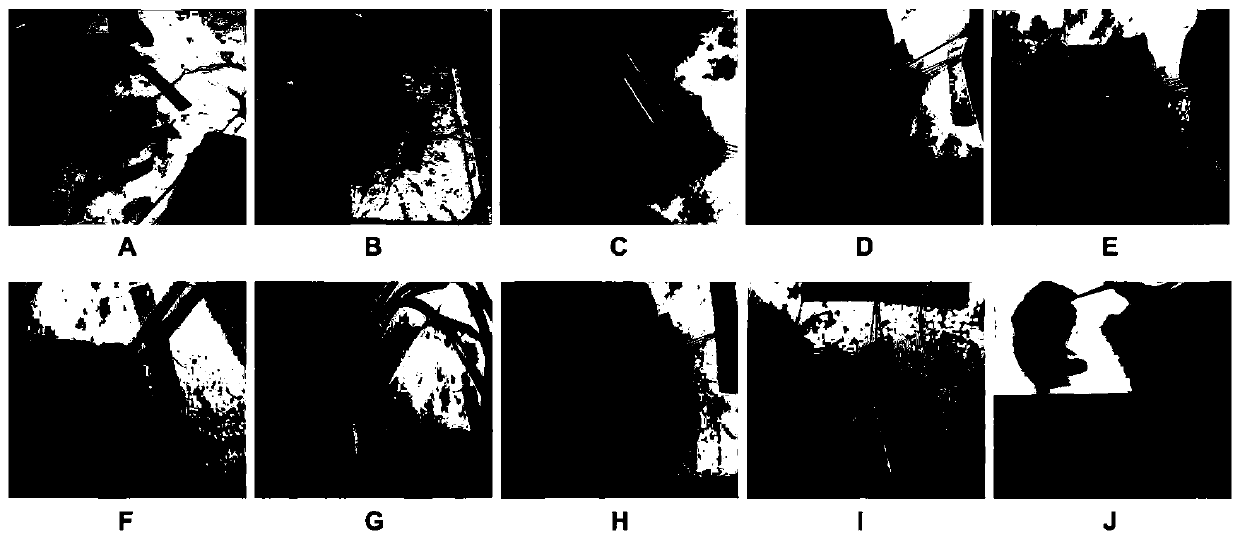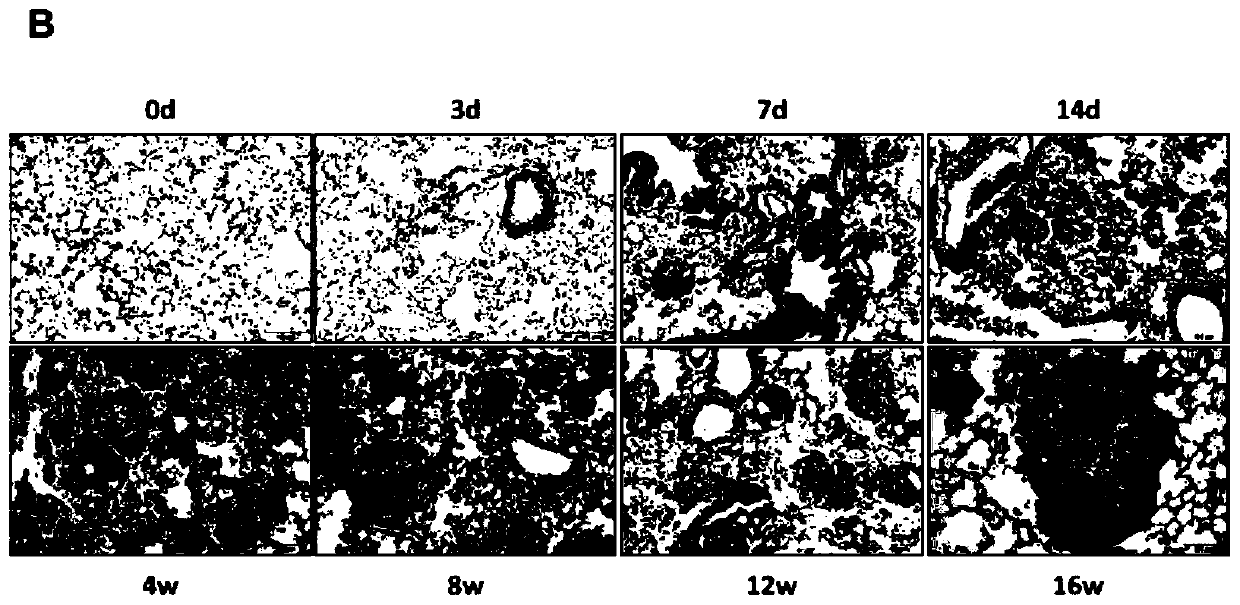Improving method for preparing mouse silicosis model
A mouse and model technology, applied in animal husbandry and other directions, can solve problems such as failure to successfully prepare mouse models, inability to be widely used, and long modeling time, to ensure repeatability and scientificity, ensure feasibility, The effect of high model success rate
- Summary
- Abstract
- Description
- Claims
- Application Information
AI Technical Summary
Problems solved by technology
Method used
Image
Examples
Embodiment 1
[0040] Improved method for preparing mouse silicosis model
[0041] 1. Experimental animals
[0042] SPF C57BL / 6 mice (provided by the Experimental Animal Center of North China University of Technology), both male and female, 8-16 weeks of age, 20-30g weight.
[0043] 2. Preparation before model preparation
[0044] (1) The micron SiO 2 The granules are ground in an agate mortar for 2-3 hours, and then baked in a vacuum drying oven at 200°C for 2 hours to sterilize and remove endotoxin contamination; use a 0.9% NaCl solution to prepare them to a concentration of 50mg / ml, 100mg / ml, 200mg / ml SiO 2 Suspension.
[0045] (2) The mice were fasted with water for 8h before operation.
[0046] 3. Model preparation process
[0047] (1) Anesthesia: Anesthetize mice by intraperitoneal injection of 1% pentobarbital sodium (50 mg / kg pentobarbital sodium).
[0048] (2) Fixation and shearing: fix the mouse in the supine position, with the neck slightly raised, and the incisor teeth fixed with silk thread...
Embodiment 2
[0056] The mouse model of silicosis prepared by the improved method disclosed in this application is grouped by instilling different concentrations of SiO into the trachea 2 Suspension, specific: Group A injected 50mg / mLSiO 2 Suspension, group B injected 100mg / mLSiO 2 Suspension, group C injected 200mg / mL SiO 2 Suspension, another control group was set up to observe the success rate and mortality of the 4 groups of mouse models, as shown in Table 1.
[0057] Table 1 The success rate and mortality of mouse models
[0058]
[0059] Note: 1. The total number of deaths is equal to the number of deaths during the operation plus the number of deaths after the operation; 2.171 / 223 represents the number of survivals of the model and the total number of survivals (including the number of survivals in the control group and the number of survival in the model group), indicating: 171=60+57 +55, 223=51+60+57+55; 3. The success rate is equal to the number of models divided by the number of surviv...
Embodiment 3
[0065] Compare the number of nodules between animal models prepared by different methods and the mouse model prepared by the improved method of this application (nodules are one of the criteria for judging silicosis)
[0066] 1. References: Quan Shangkun, etc., the intervention effect of Pabirestat on silicosis fibrosis in mice, nasal instillation of SiO 2 The mouse model was prepared by the suspension method, and the nodules of lung tissue sections were observed, such as Picture 10 Shown
[0067] 2. References: Sachin K et al. Oropharyngeal administration of silica in Swiss mice: A robust and reproducible model of occupational pulmonary fibrosis, inhalation of SiO by oropharyngeal 2 The mouse model was prepared by the suspension method, and the nodules of lung tissue sections were observed, such as Picture 11 Shown.
[0068] 3. References: Wu Q et al, miR-489inhibits silica-induced pulmonaryfibrosis by targeting MyD88 and Smad3 and is negatively regulated by lncRNACHRF, inject SiO ...
PUM
 Login to View More
Login to View More Abstract
Description
Claims
Application Information
 Login to View More
Login to View More - R&D Engineer
- R&D Manager
- IP Professional
- Industry Leading Data Capabilities
- Powerful AI technology
- Patent DNA Extraction
Browse by: Latest US Patents, China's latest patents, Technical Efficacy Thesaurus, Application Domain, Technology Topic, Popular Technical Reports.
© 2024 PatSnap. All rights reserved.Legal|Privacy policy|Modern Slavery Act Transparency Statement|Sitemap|About US| Contact US: help@patsnap.com










